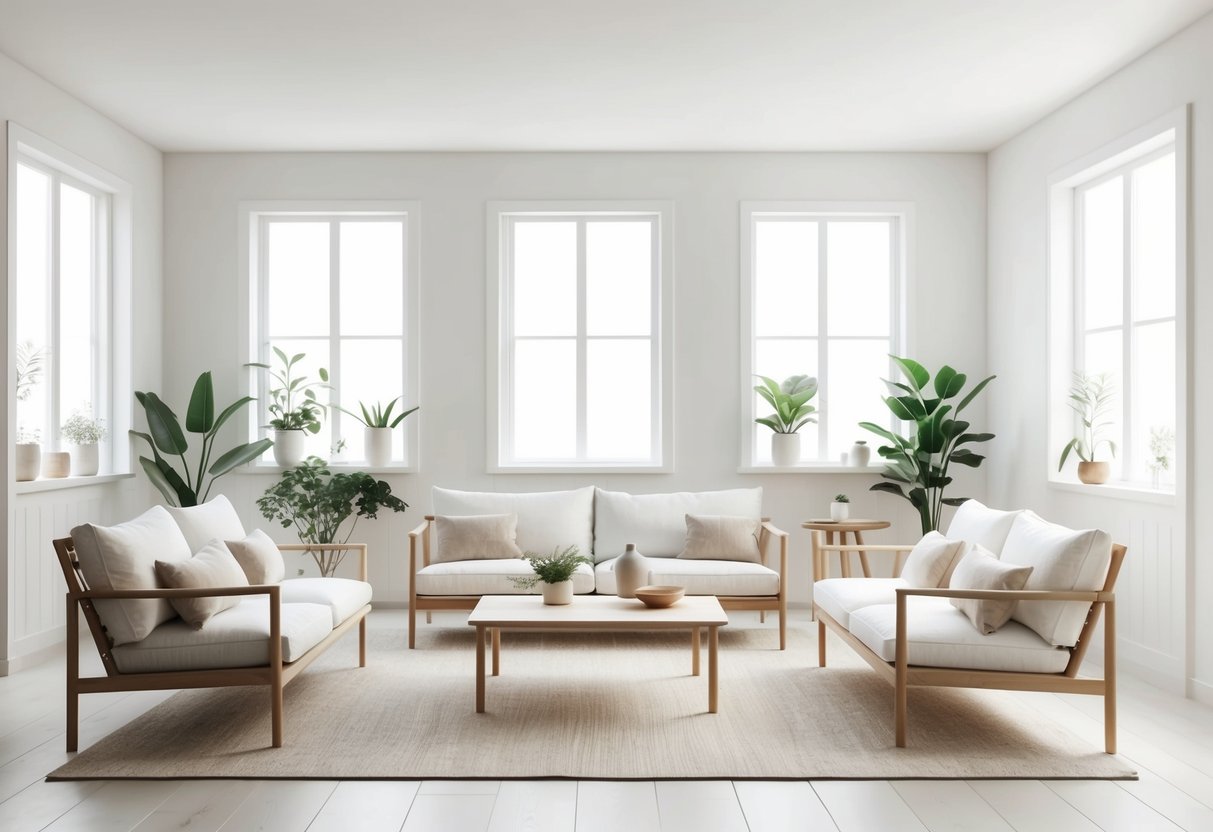
Embracing Natural Materials and Textures
Scandinavian interior design relies on the use of authentic materials and tactile contrasts to evoke comfort and a feeling of cosiness. By thoughtfully incorporating elements like wood, stone, and soft textiles, any space can achieve this sought-after balance of warmth and functionality.
Wood and Stone Elements
Wood is a fundamental part of Scandinavian interiors. Pale woods such as birch, ash, and pine are favored for flooring, furniture, and wall treatments.
These light finishes help reflect natural light and create a more open, welcoming atmosphere. Stone is often used for countertops, accent walls, or decorative accessories.
Pairing these two natural materials grounds a room, building a sense of durability and organic beauty. Sustainable sourcing is common, ensuring materials are both eco-conscious and long-lasting.
A simple table can illustrate popular combinations:
| Material | Use | Typical Look |
|---|---|---|
| Birch | Flooring, tables, chairs | Light, smooth, matte |
| Stone | Kitchen tops, decor | Textured, cool tones |
| Pine | Wall panels, beds | Warm, subtle grain |
Layering wood with stone—such as a wooden dining table with stone accessories—brings a subtle, earthy dynamic that defines Scandinavian interior design.
Textile Layering for Comfort
Textiles are indispensable for adding comfort and enhancing cosiness in a Scandinavian-styled home. Sheer linen curtains, chunky knit throws, soft wool rugs, and plush cushions are layered not only for insulation but also for their tactile variety.
Carefully chosen textiles can contrast a space’s harder materials with softness and warmth. Rugs in natural fibers like wool or jute create visual zones and provide underfoot comfort.
Blankets and throws draped across sofas or beds add both function and style. A mix of neutral tones with occasional accent colors ties different rooms together.
This approach creates a balanced, calming look that feels both inviting and practical for everyday living, as shown in Scandinavian design principles. Using a variety of textures in natural materials is key to achieving that distinctive Scandinavian sense of homeliness.
Maximizing Natural Light and Tranquility
Scandinavian interiors rely on abundant natural light and a sense of calm to create a cozy, inviting atmosphere. Thoughtful choices in window design and layout planning can dramatically affect how serene and bright each room feels.
Window Treatments and Placement
Choosing the right window treatments is essential for leveraging every drop of daylight. Sheer curtains in white or pale gray filter sunlight gently, allowing rooms to stay bright without sacrificing privacy.
Avoid heavy drapes and instead opt for light fabrics that let the outdoors in—this softens the space and diffuses light evenly. Maximizing natural light also involves careful window placement.
Expansive windows, corner panes, and skylights make a noticeable difference, especially during long winters. In Scandinavian homes, windows are often left unadorned if privacy allows, making it easier for sunlight to fill the entire room.
Placing mirrors opposite windows amplifies daylight and can visually enlarge compact spaces. A few key considerations to keep in mind:
- Use light, natural fabrics for curtain panels
- Leave windows bare or minimally covered where possible
- Position mirrors and reflective surfaces to increase brightness
Natural greenery next to windows can also enhance tranquility. Living plants help filter light, add visual softness, and connect interiors to the natural world.
Open Plan and Airy Layouts
Open-plan designs amplify light and contribute to a tranquil, uncluttered atmosphere. Removing unnecessary interior walls and using half-walls or glass partitions lets daylight penetrate deep into the home.
This approach also helps living spaces feel more expansive and encourages airflow. Furniture arrangement plays a crucial role in keeping layouts airy.
Low-profile sofas and tables, simple shelving, and unobtrusive decor allow light to travel unimpeded. Scandinavian interiors often group seating to invite conversation while avoiding bulky pieces that could block natural light from moving through the room.
To achieve a genuine sense of tranquility, keep floor spaces clear and pathways open. Neutral wall colors and light flooring materials, like pale wood, reflect sunlight and maintain the interior’s brightness.
Layering cozy textiles such as wool throws or cushions provides a warm counterbalance to the bright, open environment, supporting both comfort and coziness.
For more inspiration on using natural light to your advantage in Scandinavian design, see these Scandinavian style inspirations.